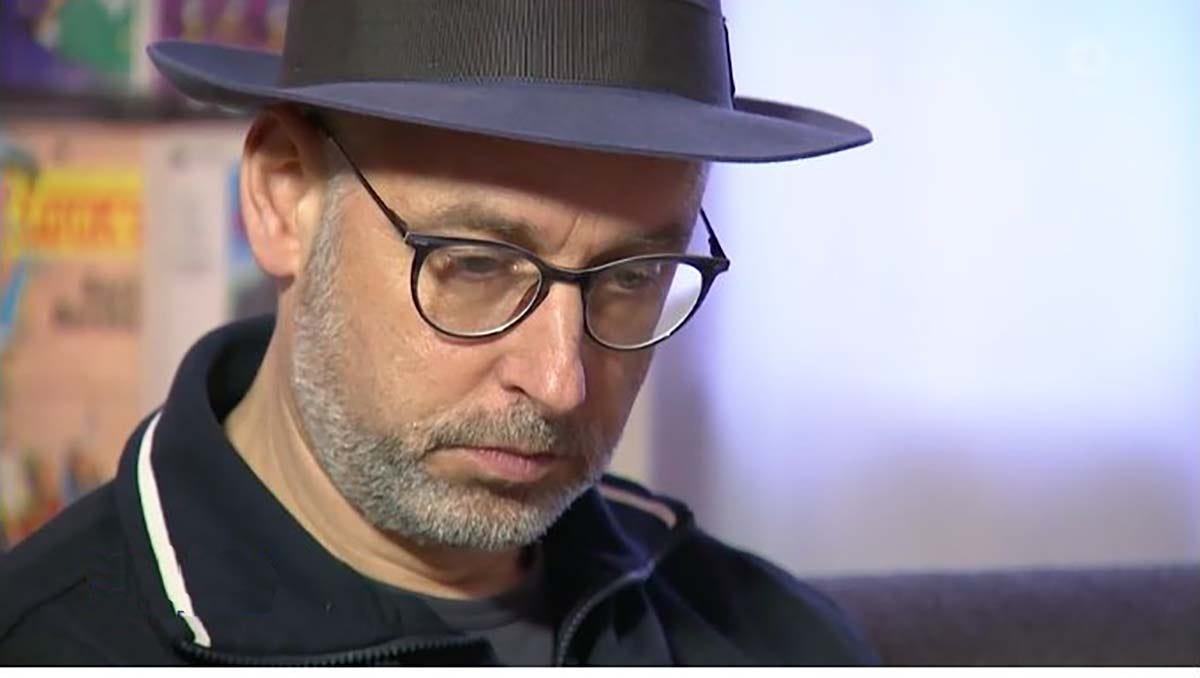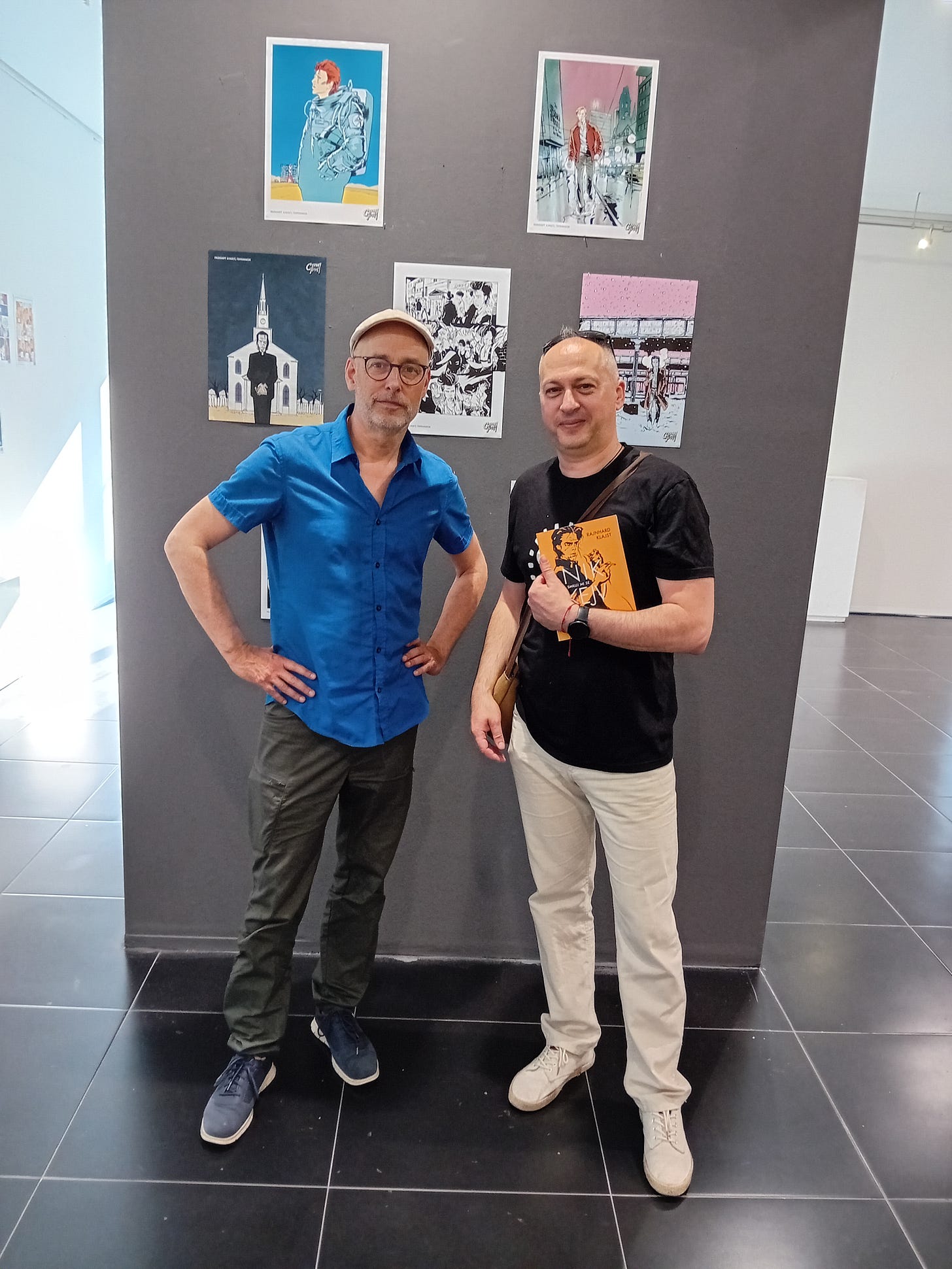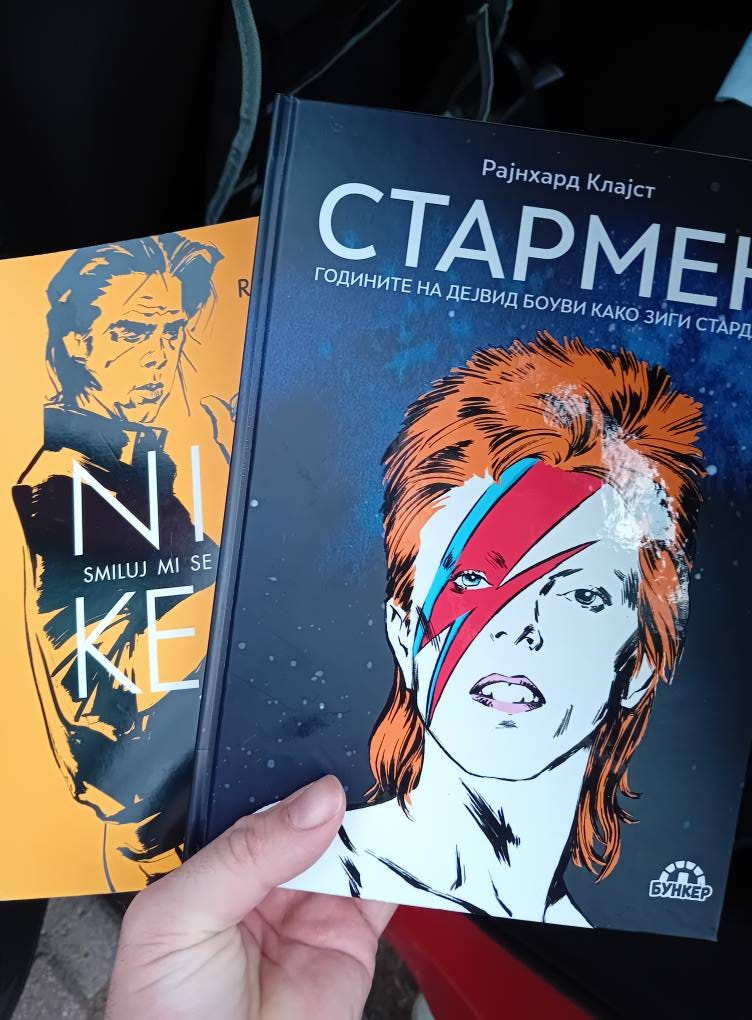Welcome to Vintage Cafe.
This is my personal corner for sharing music, books, films, travel, and the stories that stay with me. Every post is written with care, like a letter to a friend. Think of it as a slow conversation over coffee.
This June marks three years of writing, reflecting, and connecting with kindred spirits. To celebrate, I’m offering 20% off for new paid subscribers — a small thank-you and an invitation to join the inner circle.
Paid subscribers get access to bonus posts, behind-the-scenes reflections, and deeper dives into the music and moments I don’t share anywhere else. Whether you're reading everything or just stopping by, I’m truly glad you’re here.
Strip Trip Festival’s official poster
One of the guests at this year’s Strip Trip Festival in Skopje, Macedonia is someone many local readers are just beginning to discover — though his work has long been making waves far beyond Macedonia. German comic book artist and illustrator Reinhard Kleist has carved out a remarkable path by telling the stories of real people, whether they’re globally famous musicians or lesser-known individuals whose lives deserve to be remembered.
I first came across his work through Mercy on Me, his book about Nick Cave — a poetic and visually rich dive into Cave’s music and mythology. I picked it up in Serbia years ago, and it stayed with me. It had that kind of impact: haunting, but full of tenderness too. Since then, his Ziggy Stardust graphic novel has been translated into Macedonian, and the second volume, Low — which focuses on Bowie’s Berlin years — is on the way. It feels like perfect timing to have Kleist visiting Skopje, just as more and more people here are finding their way into his world.
Kleist started out in the 1990s, studying graphic design in Münster. Like many artists, he experimented with different genres early on — horror, fantasy, even some surrealism — before turning to biography. That’s where his voice really took hold. His 2006 book Cash – I See a Darkness, about Johnny Cash, became a breakthrough — winning awards and being translated into many languages. But what makes Kleist stand out isn’t just the subjects he chooses — it’s the way he approaches them. His biographies are more than timelines; they’re emotional journeys. He blends fact and imagination, lyrics and memory, using strong lines and deep contrasts to evoke mood as much as meaning.
Kleist and me
Whether it’s Johnny Cash, David Bowie, Nick Cave, or stories like The Boxer (about Hertzko Haft, a Jewish boxer who survived Auschwitz) or An Olympic Dream (about Somali runner Samia Yusuf Omar), Kleist manages to strike a balance between truth and creative interpretation. As he told me in our conversation, “What interests me more than just the life story is the theme behind it.”
These themes — struggle, identity, reinvention, survival — are what give his books such resonance. He doesn’t just capture public figures; he gets at something deeper and more universal. That’s probably why his work speaks to so many people across different countries and languages.
Kleist lives and works in Berlin but travels often, giving workshops and talks around the world. His work with the Goethe-Institut has taken him everywhere from Iraq to Brazil, where he uses comics as a way to share stories, teach, and connect across borders. He’s also collaborated with musicians for live drawing shows, bringing yet another layer to how comics can interact with other art forms.
Meeting him in person, it’s clear that Kleist carries the same thoughtfulness you see in his art. He speaks with genuine admiration for the artists he draws — especially Bowie — and with respect for the people whose stories might otherwise go untold. Whether he's illustrating the dark corridors of Berlin or the emotional terrain of a song, there’s always care behind his lines.
Reinhard Kleist isn’t just telling stories — he’s listening closely, too. And that might be the real magic behind his work.
Vintage Cafe: I'm going to ask you about different aspects of your work — some about the musical books, and some about the non-musical ones. So, what is it about the comic book medium that allows you to express something that other formats don't? What does it offer you that makes these sorts of stories possible?
Reinhard Kleist: Well, first of all, I tried out several genres in comics. I did some fantastic works and also some in the fantasy or horror genre. Then I discovered the form of biography for myself, and the Johnny Cash book was the first biography I worked on.
Immediately, I was totally fascinated by the idea that in a comic book, you can do anything. You can basically do whatever you want. You don’t have to think about a budget or anything like that.
There are no restrictions. However, if you work with musicians, you must find a way to incorporate sound into the work. That was the challenge with the Johnny Cash book.
I really wanted to try to make the sound and the music visual through the narration. The music becomes a big part of the storytelling. So I had the idea to implement short stories based on the lyrics into the narrative.
So every now and then, in the Johnny Cash book, there are songs illustrated as short stories. In the Nick Cave book, I did something similar, but I went a step further. I used these short stories not just to illustrate the songs, but to explore something about Cave’s life and what might have been going on inside him.
With the David Bowie book, it was again something different. David Bowie is also a storyteller in his music, but he approaches it differently. He doesn’t usually tell one story per song. For example, the Ziggy Stardust album tells a complete story over the course of the whole record.
That’s what I wanted to do with that book — to tell the story of that album, because it also reflected a lot about his life as a rock star, what he was going through, and what he thought about it. The album is actually quite dark.
I found that fascinating — he was in his mid-twenties when he wrote it, just at the start of his career, and the whole album offered a very dark perspective on the role of the rock star. That’s really what the David Bowie book is about.
Keep reading with a 7-day free trial
Subscribe to Vintage Cafe to keep reading this post and get 7 days of free access to the full post archives.








